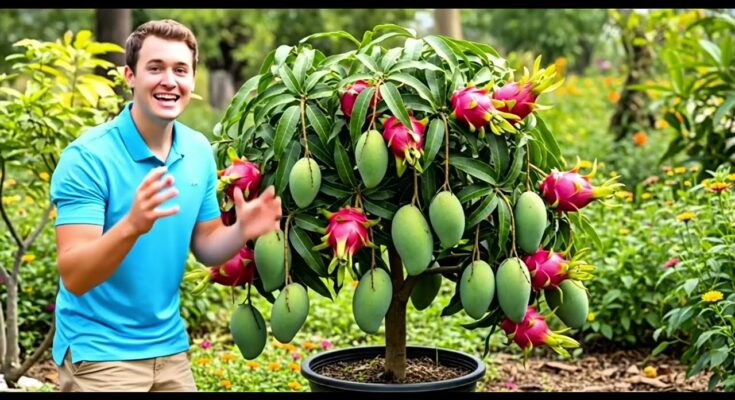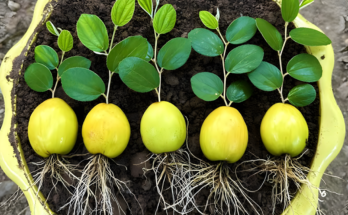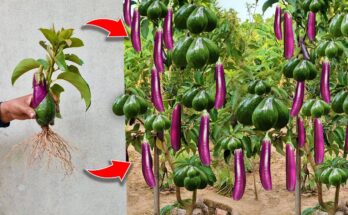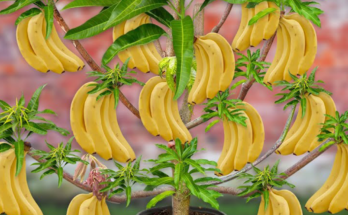How to Grow a Mango and Dragon Fruit Tree Together!
Growing different fruit trees together has become one of the most creative and exciting methods for gardeners who want to save space and enjoy a variety of delicious fruits in one garden. Among the most interesting combinations is growing mango and dragon fruit together. Mango, known for its rich, tropical flavor and tall tree form, and dragon fruit, famous for its climbing cactus nature and vibrant fruits, can actually be cultivated in harmony if you use the right method. In this guide, you’ll learn how to grow mango and dragon fruit together successfully, using practical techniques that help both plants thrive side by side.
1. Understanding the Nature of Both Plants
Before starting, it’s important to understand the basic nature of these two fruit species.
Mango trees (Mangifera indica) are tropical evergreens that grow best in warm, sunny climates. They can grow quite tall—up to 10 meters or more—and need well-drained soil. Mango trees have deep roots and require good space for their canopy and fruit production.
Dragon fruit (Hylocereus undatus or Hylocereus costaricensis), on the other hand, is a climbing cactus. It prefers hot, sunny environments and needs a support structure to climb. Its roots are shallow compared to mango, but it spreads through vines that can reach several meters long.
When you grow them together, the mango can serve as a living support for the dragon fruit vine—creating a unique, space-saving combination where both plants benefit from the same environment.
2. Choosing the Right Location
Select a sunny area where both plants can receive at least 6–8 hours of direct sunlight each day. Both mango and dragon fruit thrive in warm conditions and dislike waterlogging. Avoid low-lying areas where rainwater accumulates.
If you are planting in pots or containers, make sure they have good drainage holes and use large, deep pots for the mango seedling, as mango roots grow quickly and deep.
3. Preparing the Soil
Good soil preparation is essential. Both plants prefer slightly sandy, well-draining soil with a pH between 6.0 and 7.0. You can prepare the perfect mix using:
- 40% garden soil
- 30% coarse sand or perlite
- 30% compost or well-rotted manure
This mixture ensures proper drainage for the dragon fruit and deep rooting for the mango tree.
Before planting, loosen the soil about 50 cm deep and mix in some organic fertilizer or bone meal. This helps promote strong early root growth for the mango seedling and provides nutrients for the dragon fruit vines later on.
4. Planting the Mango Tree
Start by planting your mango seedling or grafted mango sapling. Dig a hole about twice the size of the root ball, place the seedling in the center, and fill it with your prepared soil mix. Water thoroughly after planting.
If possible, choose a dwarf or semi-dwarf mango variety—these are easier to manage and provide a good structure for the dragon fruit to climb. Varieties like ‘Nam Dok Mai’, ‘Honey Mango’, or ‘Manila’ are great choices for smaller gardens.
Allow the mango seedling to grow for about 2–3 months until it becomes strong enough to support other plants around it.
5. Planting the Dragon Fruit Around the Mango
Once your mango plant is well established, it’s time to plant the dragon fruit cuttings or young cactus around the base.
- Use two or three healthy dragon fruit cuttings, about 30 cm long each.
- Plant them about 20–30 cm away from the mango trunk, slightly slanted so the vines naturally climb toward the mango’s stem.
- As the dragon fruit grows, gently tie its vines to the mango trunk using soft string or cloth strips to avoid damaging the bark.
This technique allows the mango to act as a natural support post while providing partial shade for the dragon fruit roots during hot afternoons.
6. Watering and Fertilization
Both mango and dragon fruit love moisture, but neither likes to sit in water. Water the plants 2–3 times a week, depending on the weather. During rainy seasons, reduce watering to prevent root rot.
For best growth:
- Apply organic compost around the base every two months.
- Use a balanced fertilizer (NPK 10-10-10) once a month during the growing season.
- When the plants start flowering, switch to a fertilizer higher in phosphorus and potassium (like NPK 5-10-15) to promote fruiting.
Avoid over-fertilizing; this may cause too much leafy growth and delay fruiting.
7. Pruning and Maintenance
Pruning is very important for maintaining balance between both plants. The mango should not grow too dense; trimming some branches improves sunlight exposure and air circulation, which the dragon fruit needs for healthy flowering.
Also, prune the dragon fruit vines occasionally to control their direction and encourage more flowering branches. This will also prevent them from covering the entire mango canopy, which could block sunlight from reaching the mango leaves.
8. Pollination and Fruiting
Both plants can flower and fruit in the same season if properly cared for. Dragon fruit usually blooms at night and produces its unique, bright fruits within 30–50 days after flowering. Mango trees bloom during the dry season and may produce fruit 4–6 months later, depending on the variety.
You can encourage faster fruiting by using grafted mango seedlings and mature dragon fruit cuttings from already fruiting plants. These will begin producing fruits in as little as 1–2 years instead of 3–5 years.
9. Harvesting and Enjoying the Results
When harvest time comes, you’ll have the joy of collecting two tropical treasures from the same living space.
- Mango fruits are ready when they turn golden and emit a sweet aroma.
- Dragon fruits are ready when their skin turns bright red or yellow and the scales start to slightly dry out.
Together, they create a colorful, nutritious, and beautiful combination that will impress anyone who visits your garden.
10. Final Tips for Success
Keep pests away using organic methods like neem oil spray or garlic solution.
- During extreme heat, add mulch around the base to retain soil moisture.
- If growing in a windy area, support the mango with a strong stake so both plants stay stable.
Growing mango and dragon fruit together not only saves space but also creates a visually stunning and productive garden centerpiece. With patience, care, and balance, you’ll enjoy the beauty and bounty of both tropical fruits—side by side on the same living structure.



